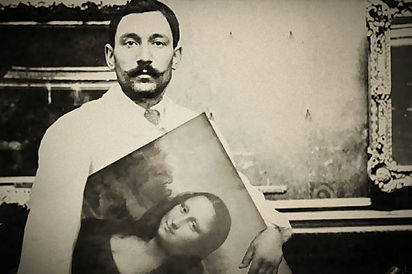
play music
Woof Woof, Darling
It may feel a bit strange to use a dog as an accessory or a piece of art, but luxury brands have long incorporated dogs into their campaigns and recently, it has become a powerful trend (November 2024).
Several reasons explain this trend:
Creating an emotional and universal connection
Dogs evoke positive emotions, such as warmth, love, loyalty, and joy. When luxury brands use dogs, it helps soften their prestigious and distant image and create a more accessible and human feel. Strong emotional connections with the brand increase loyalty.
Visual and aesthetic effect
Dogs photograph beautifully and contribute to the campaign’s aesthetic. Whether it's elegant clothing that suits a luxurious atmosphere or cute and lively outfits, they add a unique visual layer. They blend well into a fashionable composition and create a balance between formality and playfulness.
Viral content on social media
Photos and videos featuring dogs receive high engagement on social media. Brands take advantage of this to create content that spreads organically and reaches new audiences. Dogs bring a sense of lightness and humor, helping brands feel less "serious."
Appeal to a broad and diverse audience
The campaigns appeal not only to fashion lovers but also to animal lovers – a wide audience that easily connects with such a visual language. Many people see dogs as an important part of their lives, and when they appear in a campaign, a natural sense of identification is created.
Symbolism of a lifestyle
Luxury brands don't just sell products, but a lifestyle. Dogs symbolize family, luxurious living (like a walk with a dog wearing a designer collar), and sometimes even sophistication or individuality. Incorporating dogs into a campaign emphasizes this connection and creates a broader narrative around the brand.
In conclusion, incorporating dogs into luxury brand campaigns is much more than a gimmick — it serves an emotional, aesthetic, and cultural need. When the dog becomes a figure in the campaign, it not only enriches the visual language but also creates a deeper connection between the brand and the audience.

“Fetching Is Your Dior” – Lisa Taylor and Doberman (1976)

Christie Brinkley & Doberman – Vogue shoot (c. 1977)

Louis Vuitton, Dog LVERS Campaign, Pre-Spring 2025.

Jacquemus SS25 Campaign – La Croisière
The Mona Lisa Mystery
The Mona Lisa by Leonardo da Vinci is the most famous artwork in the world.
Over the years and still today, artists try to gain recognition and bring their art into the light.
Why is it that the Mona Lisa is the most famous of all?
The Mona Lisa is a performance piece painted by Leonardo da Vinci at the beginning of the 16th century,
apparently between the years 1503–1506, but to this day, it’s unclear if it was ever fully completed.
It is considered one of the most famous and documented paintings in history, for a variety of reasons.
For example, the smile the Mona Lisa’s smile is one of the most mysterious elements.
It manages to change depending on the viewing angle or the viewer’s mood, creating a sense of a personal and unique experience.
And of course, it demonstrates insane painting skills.
Also, the Mona Lisa’s direct gaze follows the viewer from every direction, adding to the mystery and intrigue.
In my opinion, these claims explain the painting, because I see here insane execution and artistic expression skills.
But I want to talk to you about why I think this is the most famous artwork in the world.
The Theft
On the morning of August 21, 1911, the famous painting disappeared from the Louvre Museum in Paris.
At first, they thought maybe the piece had been taken for cleaning or photography,
but once it became clear it was gone, it sparked a major uproar.
The thief, Vincenzo Peruggia, was an Italian who had previously worked at the Louvre as a glassworker.
Peruggia claimed he acted out of Italian patriotism. He believed that the Mona Lisa, which was created in Italy, should return “home.”
However, there are speculations that the real motive was financial, and that Peruggia had planned to sell the piece.
I say
marketing
Until the theft, the Mona Lisa was mostly known in art circles.
After the event, it became the talk of the world. Newspapers widely reported the incident,
and crowds flocked to see the empty space in the Louvre.
The theft contributed to the creation of the mysterious aura around the Mona Lisa,
and it turned from just a famous piece to an unforgettable icon.
Many see it as a symbol of classical art and the entire art establishment.
Anyone seeking global attention – whether for political, social, or psychological reasons – knows that attacking such a famous piece will make headlines.
To prevent similar incidents from happening again, the Mona Lisa now resides behind bulletproof glass and is protected by an advanced system of cameras and guards.
The historic theft is considered one of the central chapters in the history of art and crime, and adds to the painting’s legendary narrative.
What do you think?
Was the theft of the Mona Lisa a marketing strategy – or did no one even think of marketing back then?





